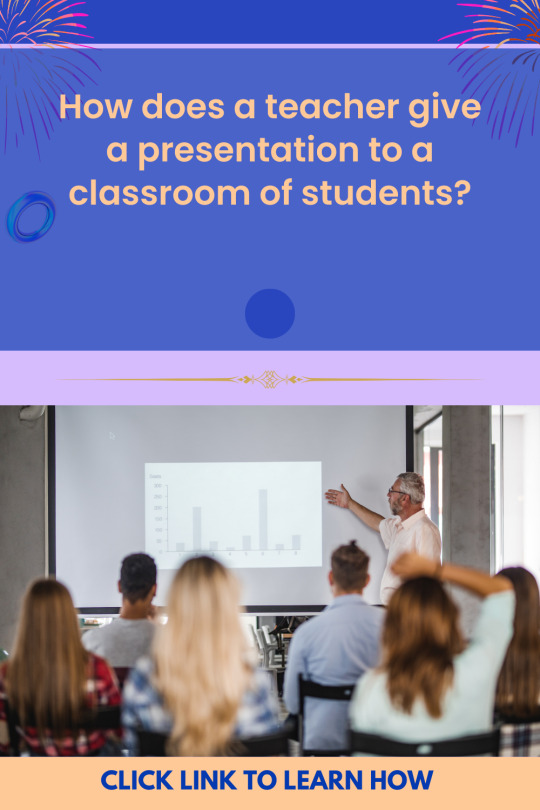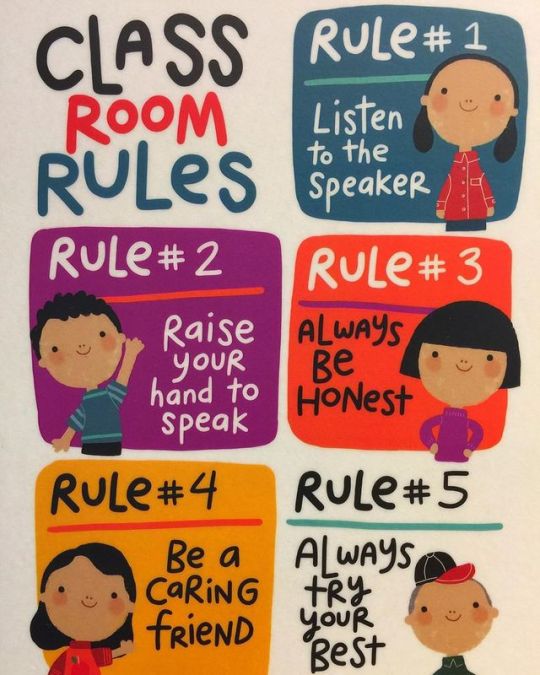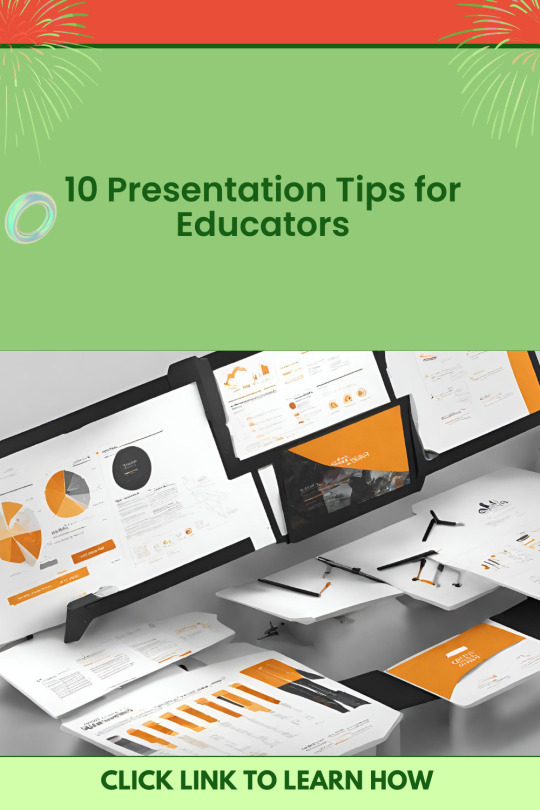#classroomtips
Text

Giving a presentation to a classroom of students can be a rewarding experience. Here are a few tips for giving a presentation to a classroom of students.
0 notes
Video
youtube
Stay Alert in Class: Tips for Optimal Focus and Energy How to Stay Awake
"Classroom Alert: Discover strategies to stay awake and focused during lectures. From simple tips to active engagement, boost your alertness for a more productive learning experience. Stay tuned for a sharper mind in class! 📚💡 #StayAwake #ClassroomTips"
0 notes
Text
Utilizing These Five Tips to Enhance Classroom Engagement
To help in your endeavor of virtual learning, here are five tips you should consider while creating your Zoom lesson plans.
Getting students engaged
Before you start teaching any of your material on Zoom classrooms, you should consider holding a check-in period with your students.
Creating interactive lessons
The Zoom application has many features that allow you to teach interactive lessons. If you have any questions, you can use this article, Zoom strategy.
Breaking out in different rooms
The breakout room function lets you create small pods where a group of students can have a group discussion on concepts, ideas, or anything on the class material.
Taking a break
By scheduling frequent breaks, students will have less of a chance of becoming exhausted by the online learning environment.
Receiving feedback
By gathering feedback from your students, you will have notes on what you can do to make your class more engaging and dynamic.
NSHSS members have the opportunity to access an abundance of resources to help them through both their academic and professional careers for life. Access to information on college readiness, scholarship application tips, networking skills, study strategies, and more helps our members succeed. Furthermore, members can also learn through fellow students, alumni, educator members, NSHSS staff, and corporate sponsors.
Learn more about the National Society of High School Scholars.
#classroom#engagement#class#highschool#nshss#national society of high school scholars#classroomtips#classes
0 notes
Photo

While looking around Papemelroti, I came across this wall hanging. Had it been available in a smaller size, I would’ve bought one. || #classroom #classroomrules #classroomdecor #decor #rules #students #studying #studyingtips #classroomtips (at Papemelroti) https://www.instagram.com/p/B3mYmRdA5Ej/?igshid=1u4h0fcpa1uaf
0 notes
Text
Teachers Reading Teachers’ blogs...
For my choice #1 project, I chose to read four teacher blogs and report my findings. Because I am currently teaching high school English, I tried to find blogs that had relevant content that I could incorporate into my classes immediately. 11th grade English is especially tricky; that is the infamous SOL year in English.
The first blog I read described be an excellent activity to use in my 11th grade class that was literature based, but analytical both grammatically and thematically. It is from Learning from my mistakes: an English teacher’s blog and the blog is from 1/22/17 entitled “The purpose of facing one long sentence.” The lesson is simple: find one long sentence from literature (preferably something students are currently reading) and break it down for analysis purpose. Step one is to look at the words. The students find interesting or important words from the sentence, and they label them grammatically (noun, verb, adverb, etc). Step two is to identify the purpose of the sentence. This teacher frames by using the phrases “To show us” or “To teach us” so the students understand what they are looking for. Next, they look at the feeling the author invokes by his/her words. Lastly, they notice the writing techniques that are utilized; usually by looking at the phrases and clauses and identifying what they are and how/why they are used (e.g., a list, compare/contrast, a short sentence, etc). Between these four points of analysis, students are employing many of the English 11 standards that are necessary for success on the SOLs. This is an activity I could start in my class tomorrow; it is easy to understand and simple to explain, with no big set-up or prep work.
The second blog I read is from Hunting English, and the blog is titled “Top Ten Tips for Behavior Management.” It is a great one, so here is the link: https://www.huntingenglish.com/top-ten-tips-for-behaviour-management.
This blog is relevant for me because I teach collaborative classes with a special education teacher, so there are often behavior issues running amuck in classes. The blog lists the following rules: 1. Meet them at the pass (this ties into Teacher Man by stressing the importance of the posture of greeting the students every day) 2. Confident leadership (faking it, if necessary) 3. Sweat the little details (they will become big problems one day) 4. One rule to rule them all (for him, it is not talking over others; insist on it) 5. Silence is golden (students don’t always need to be talking to be engaged) 6. Make good behavior visible 7. Avoid conditional language 8. Teach them to listen, communicate, and behave 9. The three R’s: rigorous, relentless routines 10. Relationships matter
The third blog that interested me concerned grading, which is honestly an English teacher’s nightmare. And undeniably, “feedback” is a buzz word that is thrown around every department/faculty meeting. The blog “A Marking Revolution?” from Ed-U-Like had some helpful things regarding the difference between marking and feedback. The main point of the blog is that “Careless mistakes should be marked differently to errors resulting from misunderstanding. The latter may be best addressed by providing hints or questions which lead pupils to underlying principles; the former by simply marking the mistake as incorrect, without giving the right answer.” The premise behind this is that students are more diligent in proof-reading their work (in English, that means spelling, grammar, punctuation, etc.) so that the teacher can focus on what the students might not understand rather than mistakes they carelessly made. I agree with this and would love to make the switch from marking to feedback; however, I have found that students do not necessarily know what they’re doing when it comes to proof reading. I incorporate lots of peer editing and revision, but I have found that students often to not catch the “careless” mistakes mentioned in the blog.
The last blog that I chose to read was for purely selfish reasons. It is called “Ten kids’ books you should read (if you want to be an English teacher)” by Reading all the Books. I love to read, and I wanted to see how I fared with the list given. Here they are: The Fault in our Stars (check), The Book Thief (I have it, but haven’t read it yet), The Giver (check), The Curious Incident of the Dog in the Nighttime (check), What is the What (nope), The Knife of Never Letting Go (no), Looking for JJ (no), Chains (nope), We Were Liars (never heard of it), and Wonder (on my list). How did you fare?
Works Cited:
"The Purpose of Facing One Long Sentence." Blog post. Learning from My Mistakes: An English Teacher's Blog. Blogger, 22 Jan. 2017. Web. 29 Jan. 2017.
Stevens, Rachael. "A Marking Revolution?" Blog post. Ed-U-Like. Blogger, 6 Dec. 2016. Web. 29 Jan. 2017.
"Ten Kids' Books You Should Read (if You Want to Be an English Teacher)." Blog post. Reading All the Books. WordPress, 1 May 2015. Web. 29 Jan. 2017.
"Top Ten Tips for Behaviour Management." Blog post. Hunting English. N.p., n.d. Web. 29 Jan. 2017.
0 notes
Text
Inquiry Project Post #1 - My Future
In the future, my major goal is to become a physical education teacher and high school football coach! After student teaching and graduating from UNM next May, I plan on earning my masters degree before entering the classroom. Also, after taking LLSS 321 this semester, one of my biggest goals as a future teacher is to emphasize and embrace student diversity. As a Mexican, I always felt shame at school for speaking Spanish. As a future teacher, I plan on celebrating differences such as language, and as long as the student is being respectful, I will allow them to talk with their friends in their native language. I hope that my future students know that I value each and every one of them for their differences!
Here is a link explaining student diversity in more depth: https://www.nde-ed.org/TeachingResources/ClassroomTips/Diversity.htm

0 notes
Text
How to create your own iPad recording booth for the classroom. https://t.co/UifK6NNGfl #education #edtech… https://t.co/gB47dtALre
How to create your own iPad recording booth for the classroom. https://t.co/UifK6NNGfl #education #edtech #classroomtips #photography http://pic.twitter.com/ceB35OYDXa
— EduTechGuys (@edutechguys) April 14, 2017
via Twitter https://twitter.com/edutechguys
April 14, 2017 at 10:09AM
0 notes
Photo

Uncovering OSU Research google map
We use this interactive map to start our Uncovering OSU Research workshop for first-year students. When they click on one of the pins, they open up a page with a description of the research (usually pulled from a press release), links to the lead author's faculty page and links to news articles about the research.
We chose the map to present this information because first-year students have trouble understanding the scope and variety of questions that scholars ask -- by grounding this in the colleges and departments they know, they can start to organize the information in a way that makes sense to them, while also communicating the disciplinary structure that is important to researchers.
0 notes
Text

Engaging presentations can help students to learn and retain information more effectively. Here are 10 presentation tips for educators.
0 notes
Text
Why do we cite?
I use this activity to frame discussions about citations and plagiarism.
Materials:
A chalkboard or whiteboard.
First, tell students that you're going to lead them through a short thought experiment.
Imagine that you've just started a new internship for a company that you really want to work for. Your new supervisor asks you to do some research and report back with a recommendation.
(The topic doesn't really matter -- it can be related to the class topic, or it could be something like recommending a new type of polling software)
Next, tell students that you're making one major assumption with this activity -- that their new supervisor is going to draw some conclusions about them from their performance on this, their first major assignment.
Ask them if they share that assumption. Make sure you have consensus on this idea before moving forward.
Now, ask students to write down a list of adjectives that they would hope their new boss would use to describe them, based on their work in this assignment.
Give them 2 minutes to create their own list
Put them in groups of 3.
Give the groups 3 minutes to develop a consensus list of the three most important adjectives.
Debrief. Ask the groups to call out adjectives while you write them on the board.
Now, tell them that we're going to shift gears a bit. Instead of thinking about how their boss would describe you, think about how you'd like your new boss to describe your process, or your work habits.
Add those terms to the list on the board.
Wrap-up.
Explain that when we cite sources -- we're helping to paint this picture of ourselves. We don't do it because we think our reader will only believe us if we have a citation, we do it because it shows the reader that we are [insert adjectives here].
Transition from this into - what types of sources should we consult to demonstrate that we are [insert adjectives here].
Note: When I have done this in classes, students tend to give the kind of adjectives that work well here -- fair-minded, objective, thorough, concise, efficient, knowledgable, etc.
0 notes
Text
Library session sandwich
This is an example of what one FYE instructor does before and after his students come to the library for an instruction session
(Note: the library session activity for this class is also discussed here).
Class: A first-year seminar called Science Myth Busters
Before the library session:
Introduce the class topic: the link between autism and vaccinations.
Students read a packet of three articles: a review article on autism spectrum disorders; a primary research article; an Internet article comparing a global list of autism rates and the number of vaccines given during childhood.
The research article in this case is the original Lancet article drawing the connection between the MMR vaccine and autism (Wakefield, 1998) later retracted.
Goals for this activity:
Provide students with a concept and language for evaluating the claims in scientific articles: correlation vs. causation.
Discuss the differences in quality between different types of sources.
Introduce the concept of scholarly communication, & scientists reviewing/ replicating each others' work.
After the library session:
Students brainstorm topics for their final presentations (myths they want to investigate).
Then I sit at the computer (projected on the screen) and let the class guide me through the process of researching the topic in real time.
The in-class activity after the library session reinforces the process demonstrated in the library session.
0 notes
Text
"If you're going to give advice like a professional, you need to research like a professional"
The title for this entry, and this activity come via a conference presentation almost 10 years old now - by Susan Avery at UIUC.
Used with a class of future health professionals.
Assumption: Even as students, you are frequently asked to give health advice.
Premise: A relative tells you their child has been diagnosed with Exploding Head Syndrome. They wonder if this is a real thing. What do you tell them.
Materials:
This 1988 article from the Weekly World News (this link goes to Google Books).
This article from the journal Headache: The Journal of Head and Face Pain
What to do:
Explain the premise.
Distribute the WWW article and ask students to evaluate it.
Ask them to formulate a response to their relative & ask them to share it.
Distribute the scholarly article.
Discuss how the existence of the scholarly article affects their evaluation. Discuss purpose of scholarly articles.
Transition into where to find scholarly articles.
Note: it would also be interesting to give students the premise and turn them loose - see what they come up with on their own.
0 notes